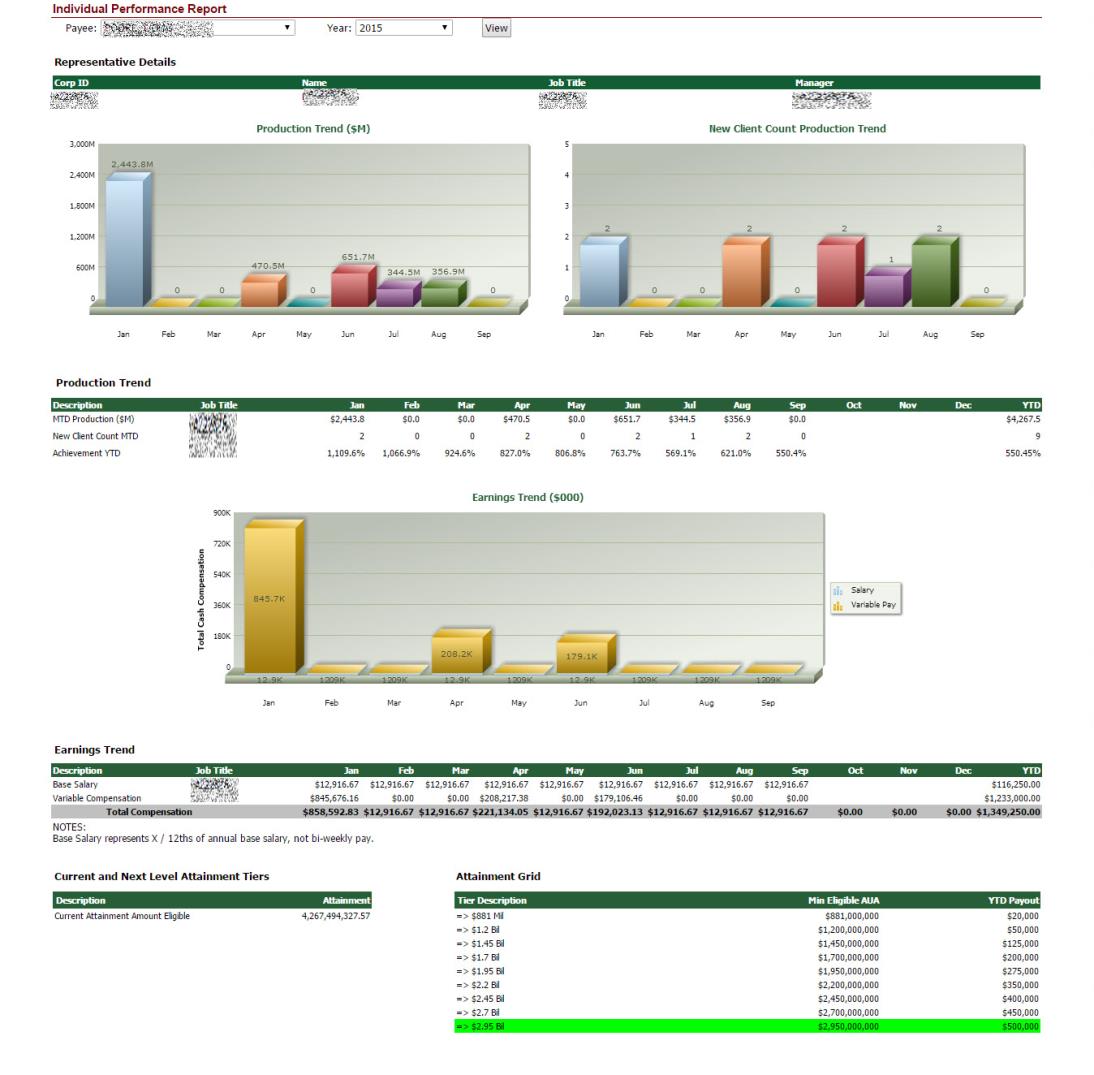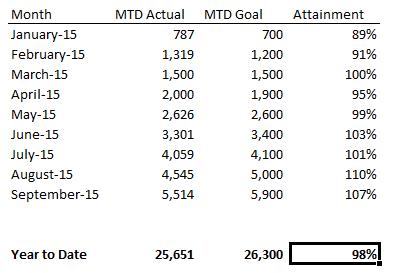Crafting an Individual Performance Report: The SPM Journey Part 2
Continuing from where we left off in the last article, I wanted to go more in-depth on which incentive compensation management (ICM) reports you should start with as you begin moving toward a full-scale sales performance management (SPM) strategy. In my experience, ICM implementations include at minimum both a compensation statement containing high-level compensation information and a detail statement, also called an Individual Performance Report. Although the quality can vary, these two reports cover the immediate needs of an ICM system in which the primary goal is to calculate and pay variable compensation.
A compensation statement is typically made up of information related to payout for a single period of time. It is essentially a paycheck. The detail statement, then, as the name implies, shows the details behind the line items displayed in your paycheck. The compensation statement view is sometimes called a W-2 view in the US. This refers to individual taxes that are based on cash received in a particular tax year, while amounts received for a plan year can span 2 tax years. For example, a sales rep may qualify for an annual bonus at the end of a given year. The bonus is not calculated until all final results are tallied. Some of these plans are very complex with multiple criteria, leading to bonus payments not being calculated for 30 to 60 days. In this situation, a payment for a bonus earned in 2015 would not get distributed until 2016, thus spanning 2 tax years. To account for this, a compensation statement doesn’t describe how you are performing to this year’s comp plan but is describing how you earned the current payment in your paycheck.
One of the most powerful aspects of an ICM system is the data it gathers over time, such as credits, quota attainment, and payout for each month at the MTD, QTD, or YTD granularity levels. From a manager and payee perspective, reviewing the results coming from all this information for the entire plan year is extremely valuable. This is a key differentiator between a dashboard and an Individual Performance Report: point in time KPIs versus plan year review. All industries and all compensation plans can get immediate value by implementing an individual performance report. It makes determining performance at a glance easy since it puts all the results from the plan year in front of you. Imagine the usefulness of this information when stepping into a one-on-one between a sales representative and a manager. Many topics may be discussed, but overall performance is always top of mind in this scenario.
What to Include in an Individual Performance Report
I’ve implemented several versions of an Individual Performance Report for several different clients. Various factors dictate the form that the final report takes. These factors include compensation plan components, industry, metrics driving performance and payouts, and available data. In all cases, however, two main categories exist: payout drivers and actual payouts.
Payout drivers include credits and achievement of corresponding quotas – the events that trigger a payout or incremental payout. Basic examples would be the dollar amount of a rep’s sales, count of widgets sold, and the percentage of their sales quota rep attains. These are always similar across industries and organizations, though their specific granularity levels may vary.
Actual payouts include everything that encompasses variable compensation in the ICM system. As with the drivers, the level of granularity may vary. In one company this may be total variable compensation and others will want all components over time.
Both of these approaches have their merits; however in my opinion payout drivers will always be the most important. Every employee receiving a commission cares about their payouts, but the drivers provide insights into the steps they’re taking to make those numbers. Though the payout amount itself will remain the same based on the agreed-upon compensation method at a company, employees can affect the different drivers that trigger their payout, gain more control of their compensation, and feel more motivated and productive if they are informed about which factors make the biggest difference.
Example Cases
Case 1: The first example is a Financial Services company who wanted payout information over the year on their compensation statement. After some initial discovery and discussion, we agreed that this wasn’t the best place for that information. In addition, through our interviews with the sales reps during requirements gathering, we learned that production data aligned with payouts throughout the year was even more valuable when put together with the variable totals. At the bottom of this report, we added a feature to show levels of attainment for a particularly large incentive. All these factors combined allow managers and reps to quickly determine where they stand throughout the year.
Case 2: At another financial services company, I designed a more detailed view. This requirement was related to a monthly attainment incentive. Their quota was broken out into MTD values as well. Without diving into the details of their particular business model and compensation plan, the deep level of detail on the Individual Performance Report allows for managers and sales reps to view past and present progress as it relates to key metrics and payouts.
Conclusion
The June 2015 research brief from the Sales Management Association (SMA) discussed the most important responsibilities for Sales Managers. Hiring, holding sales people accountable, and coaching were determined to be the top 3 priorities. Conducting performance reviews was number 7 on the list. Whether you are coaching sales people to hit their targets or focusing them in on the company strategy, the Individual Performance Report can bring you closer to a departmental model that is unified, streamlined, and on task.
If you’d like to see more about how you can get started on adding reporting into your ICM strategy, check out my previous article in this series. You can also get more info on what’s possible with sophisticated sales performance dashboards by exploring the brief for IronDrive, Ironside’s sales dashboarding solution. We’d be happy to help you evolve your ICM practices and integrate analytics into your sales process.
Be sure to check out the other articles in this SPM series:
- 3 Ways to Focus Your ICM Reporting: The SPM Journey Part 1
- 5 Compelling SPM Dashboard Creation Tips: SPM Journey Part 3







